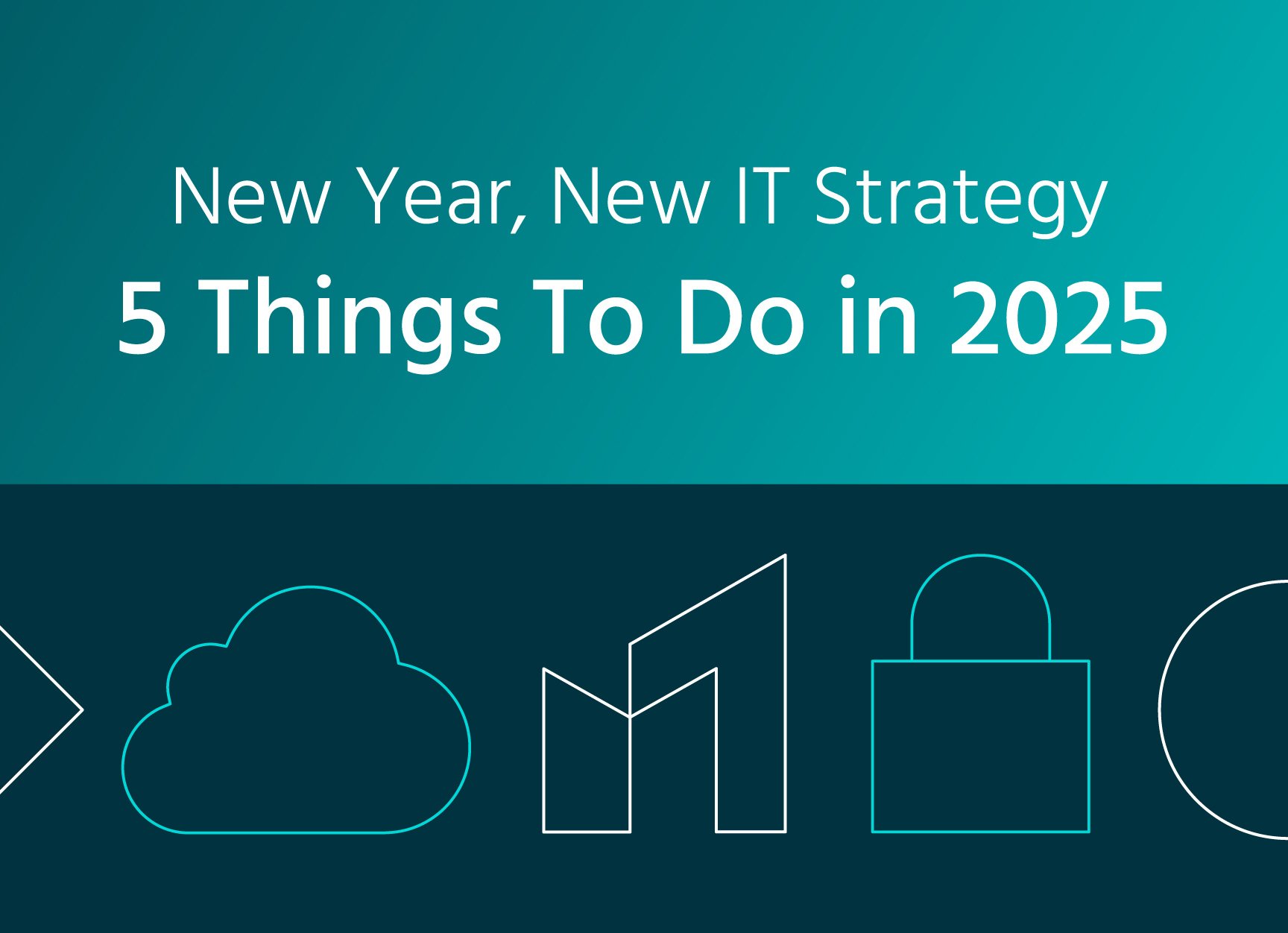New Year, New IT Strategy: 5 Things To Do In 2025

The beginning of a new year is the perfect time to reevaluate your IT strategy and align it with emerging trends and your broader organisational goals.
A well-crafted IT strategy is not just about keeping up with the times—it’s about staying ahead of the curve and positioning your business for sustainable growth. In this article, you’ll learn five ways to refine your IT strategy this year.
1. Prioritise cyber security
MicrosoftGiven the vast number of cyber security threats facing businesses of all sizes, building and maintaining robust cybersecurity defences is non-negotiable. Cyber security certifications like Cyber Essentials and Cyber Assurance are a great place to start.
Why certifications matter
These certifications offer several benefits to businesses, including the following:
- Build trust: Cyber security certifications assure customers and stakeholders that your business takes data protection seriously.
- Improve defences: To pass certifications, you must establish a range of controls that protect against the vast majority of threats.
- Comply with regulations: Certifications help businesses meet regulatory requirements from governing bodies and broader data privacy laws.
- Gain a competitive advantage: Cybersecurity certifications are becoming part of the tendering process. For example, you’ll need a Cyber Essentials certification to win government contracts.
How to get started
Follow these steps to improve your cyber security with a certification:
- Decide which certification you wish to complete. In the vast majority of cases, we recommend starting with Cyber Essentials.
- Partner with IT professionals to implement necessary policies.
- Schedule regular audits or purchase an ongoing management plan from your IT partner to maintain compliance.
Prioritising certifications secures your organisation and positions it as a trusted partner in the marketplace. It’s a win-win.
2. Stay up-to-date on the latest threats
Cyber threats are constantly evolving and becoming more sophisticated. Staying informed about emerging threats is essential for creating proactive defence strategies.
Key threats to watch
The following two threats present small businesses with the biggest problems:
- Ransomware attacks: Hackers target businesses of all sizes, installing ransomware on devices that encrypts data. They demand huge ransoms to restore access.
- Phishing and social engineering: Human error remains a major vulnerability. Phishing scams happen when malicious actors email employees, tricking them into granting access to devices and software.
How to combat threats
Follow this three-step plan to reduce your risk of cyber threats:
- Consult an IT company to understand the specific threats facing your business
- Consider implementing security awareness training to teach your team how to spot and handle threats.
- Complete one or more cyber security certifications to bolster your defences.
By understanding and preparing for the latest threats, businesses can stay one step ahead of cybercriminals.
3. Implement scalable solutions for the year ahead
Scalability is a cornerstone of a future-proof IT strategy. As your business grows, your IT infrastructure must adapt to larger workloads, expanded operations, and evolving customer demands.
Why scalability matters
There are three key reasons businesses why businesses must build scalable solutions in 2025:
- Support growth: Scalable systems ensure your IT environment can handle business expansion without overhauls.
- Reduce costs: Avoid frequent upgrades by investing in solutions that grow with your business.
- Increase flexibility: Scalable infrastructure accommodates seasonal spikes and changing market demands.
How to build scalable solutions
An IT support company can help your business scale by implementing the following solutions:
- Leverage the cloud: Cloud platforms like Azure, AWS and Google Cloud offer on-demand resources that scale up or down as needed.
- Adopt modular architecture: Use independent components that can be updated or replaced without disrupting the entire system.
Planning for scalability now ensures your business remains agile and competitive throughout 2025.
4. Adjust your data classification strategies
Data is one of your business’s most valuable assets. But are you giving it the attention it deserves and classifying it accordingly?
Data classification safeguards your most important information, helps you comply with GDPR, and increases the visibility of your data assets.
Why data classification matters
Here are three reasons to classify your data correctly in 2025:
- Improve access control. Data classification helps you determine who should be able to access what data
- Increase data visibility: It forces you to recognise what data you store and where you store it
- Comply with data standards: Data classification is a key part of GDPR regulation.
How to classify your data
An IT support company can walk you through a multi-step process to define and classify your data:
- Define classification categories: Decide whether data is public, internal, confidential or restricted.
- Inventory your assets: Identify and catalogue data accordingly.
- Apply appropriate security controls: Once you’ve categorised your data, apply relevant security protocols to keep it secure.
Adjusting your data classification strategies in 2025 will ensure compliance and empower your business to innovate and grow.
5. Review and Deploy AI with Copilot Effectively and Securely
Generative AI tools like Microsoft Copilot are transforming workflows by automating tasks and enhancing productivity. However, you’ll need to integrate the tool carefully to maximise benefits and minimise risk.
Why integrate Copilot?
Your business stands to gain a lot by securely integrating Copilot into workflows:
- Increase efficiency: Copilot can automate repetitive tasks like summarising meeting notes. This frees employees to focus on high-value activities.
- Optimise output: Copilot can create documents and presentations from scratch.
- Improve collaboration: Copilot integrates seamlessly with existing tools like Microsoft Office, streamlining workflows.
How to make the most of Copilot
Copilot isn’t perfect. There are certain challenges you must overcome. Follow these tips to make the most of Copilot:
- Set the appropriate access rights: To limit data access as much as possible, adopt the principle of least privilege.
- Invest in training: Ensure all employees are familiar with the tool’s capabilities.
- Review your progress: Regularly evaluate how your team is using Copilot and look for ways to increase adoption or widen its use cases.
Integrating Copilot effectively can give your business a competitive edge, but security and user adoption must remain top priorities.
Prepare for the year ahead with Method
There’s a lot to think about when it comes to IT in 2025, from protecting your business against malicious actors to working out how to leverage AI best and remain competitive.
Method IT can help at every stage along the journey. We specialise in crafting bespoke IT strategies for companies of any size and in any industry. We’re also a Cyber Essentials certification body, meaning we can guide you through the certification process and guarantee a pass.
Contact us today to learn more about how Method can make 2025 your most successful year yet.
Share this
You May Also Like
These Related Stories

Office 365 Security Controls. What Do Businesses Need to Know?

Who is Method IT and why should your business choose them to be your managed IT provider?
.png?width=750&height=542&name=Blog%20Image%20feature%20(20).png)
No Comments Yet
Let us know what you think